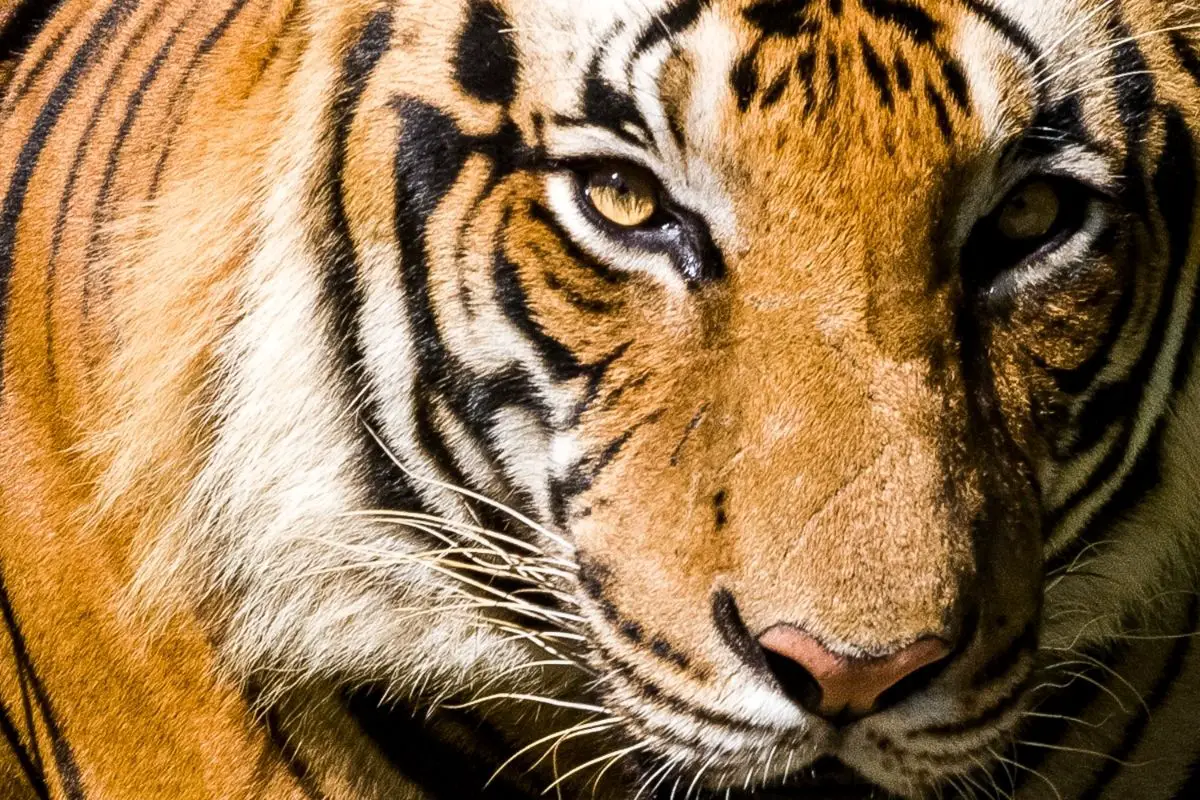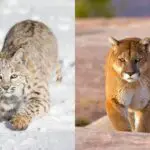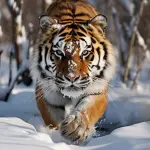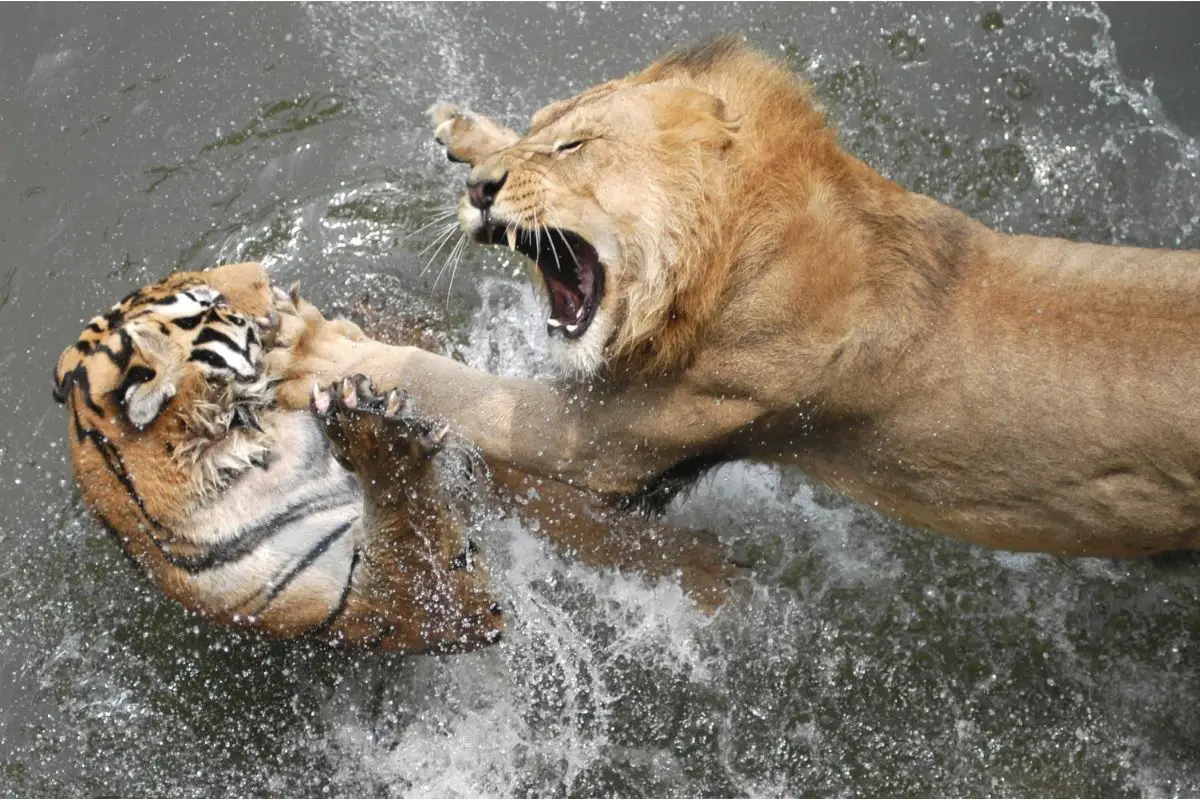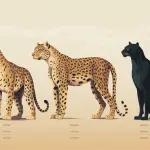Just like much larger predators like lions and tigers, the cougar and bobcat belong to the Felidae family. However, that doesn’t mean they’re the same species.
While the bobcat and cougar might share some physical similarities and even inhabit habitats that overlap, they are also very different. It is these differences that make each species more unique.
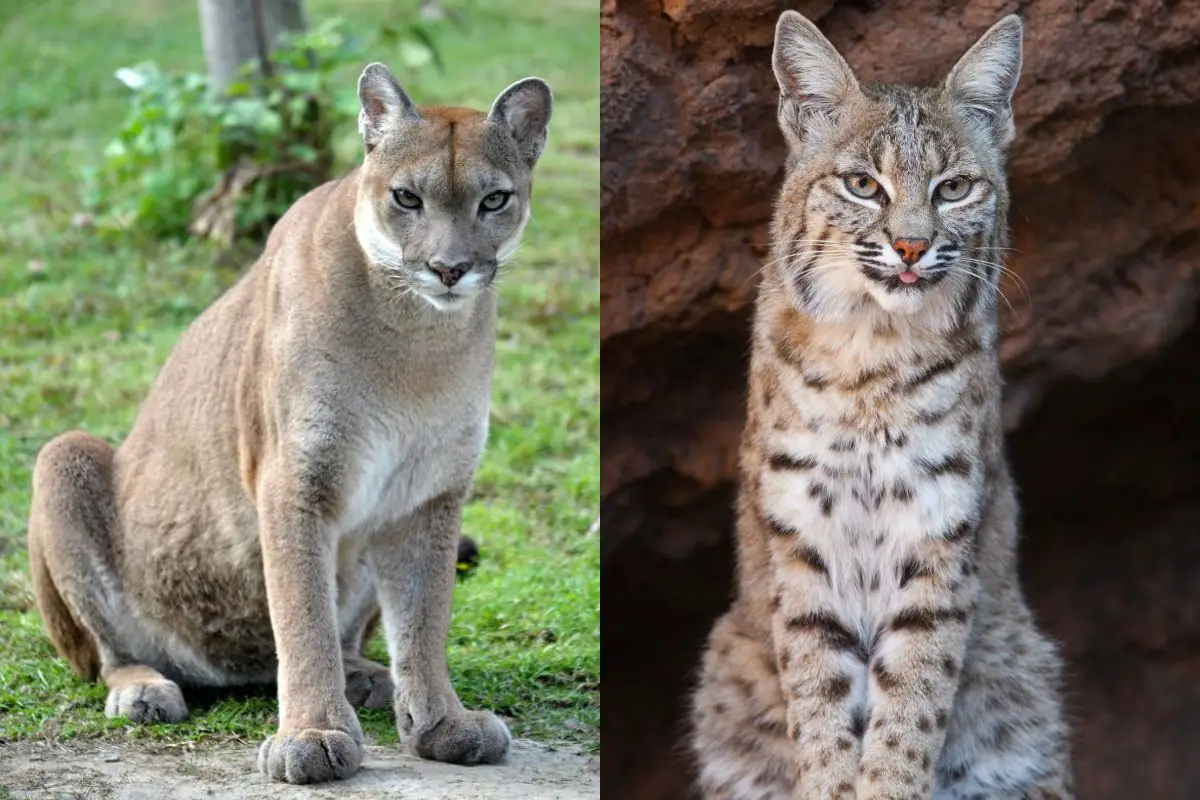
Whether it be the way they hunt, their size, or simply their scientific name, the differences between these cat species are what make them special and unique.
Today, we’re going to take an in-depth look at the main differences between the cougar and bobcat.
We’ll look at the size of each species, where they live, their hunting capabilities, and who would win in a fight if the two ever came face to face.
If you want to learn more about America’s cats, or simply want to identify the cat you’ve seen, make sure you keep reading!
Comparing Bobcat Vs Cougar
Found in the Canadian Yukon all the way down to the southern Andes in South America, the cougar is a large cat species known scientifically as Puma concolor.
With a smaller, yet still large geographic range, the bobcat is a much smaller species of cat found all over America, southern Canada, and northern Mexico.
In every way, the cougar is a lot bigger than the bobcat. In most instances, the cougar is double the size of the bobcat, which is only double the size of most domesticated house cats.
Even the tails of each species differ massively. The bobcat’s tail only reaches lengths of 7 inches long, while the cougar’s tail can grow to be almost 42 inches long. Unbelievably, that is longer than most fully-grown bobcats.
Thanks to their size, cougars are also much quicker and more powerful than the bobcat. Having said that, the bobcat is strong for its size.
As a result, the bobcat tends to hunt smaller prey than the cougar, which will happily take down a coyote if needs must.
Now we know a little bit more, let’s take a more in-depth look at the key differences between the cougar and bobcat.
Size
Let’s start by taking a closer look at the main difference between the two species. As we mentioned above, the cougar is much bigger than the bobcat.
Cougars easily grow to be double the size of most bobcats. They can reach lengths of 84 inches long. On the other hand, maximum-size bobcats only usually reach lengths of approximately 49 inches.
Having said that, most bobcats will usually only reach lengths of 26 to 41 inches long.
Cats usually have very long tails, especially predatory wild cats. However, the bobcat’s tail is surprisingly small. On average a bobcat’s tail will reach lengths between 2 and 7 inches long.
To put that into perspective, a cougar’s tail can grow up to be 42 inches long. A cougar can also grow to be between 24 and 35 inches tall, while the bobcat can only reach heights of 24 inches tall.

Speed And Movement
Due to the extreme size difference between the cougar and bobcat, you won’t be surprised to hear that the cougar is also a lot faster than the bobcat.
Having said that, credit has to be given to the bobcat because it is very fast for its size.
With longer, more powerful legs, the cougar can reach a top speed of 50 mph. The bobcat is only capable of reaching speeds of 34 mph.
Despite this lack of speed when compared to the cougar, the bobcat’s small stature is a big advantage.
The bobcat is capable of outmaneuvering a cougar because it has better balance. That doesn’t mean the cougar has poor balance though, it simply means the bobcat has better.
Bite Power And Teeth
Both the bobcat and cougar have canines, incisors, molars, and premolars. This is similar across most species of cat.
The bobcat and cougar use their sharp, distinct teeth to easily tear into the flesh of their prey. However, there are still some differences between the two when it comes to teeth.
For starters, the bobcat only has 28 teeth. The cougar usually has 30. The second difference between the two is bite power.
Despite its size, the bobcat actually has a powerful bite. However, it is no match for the cougar which has a bite power of 1311 Newtons. The bobcat has a bite power of 548 Newtons.
For such a small cat, this is very impressive.
Senses
When it comes to senses, the bobcat and cougar are pretty similar. They both have impressive hearing and vision that lets them hunt their prey with relative ease. These senses are also used to avoid confrontations with other predators.
Where the two differ in relation to senses is their sense of smell. The cougar simply doesn’t have a very good sense of smell.
The bobcat, on the other hand, has an excellent sense of smell that it can use to detect prey and larger predators.
Physical Defenses
The cougar and bobcat are solitary species of cat. Therefore, they can’t rely on a pack to protect them. As a result, they both have to rely heavily on their physical defenses.
Luckily, both have great physical defenses at their disposal. For starters, both cats have powerful bites that can be used to tear through an enemy’s flesh.
Secondly, both cats have super sharp retractable claws that can cling onto other animals and be used to slash flesh.
Finally, both have their physical speed and senses to use in the event of emergencies. If a cougar or bobcat has to flee an area, they can do so extremely quickly. The bobcat can even jump 12 feet in the air to escape.
While both species are quite shy and prefer to avoid conflict, a cougar is much more likely to stay and fight.
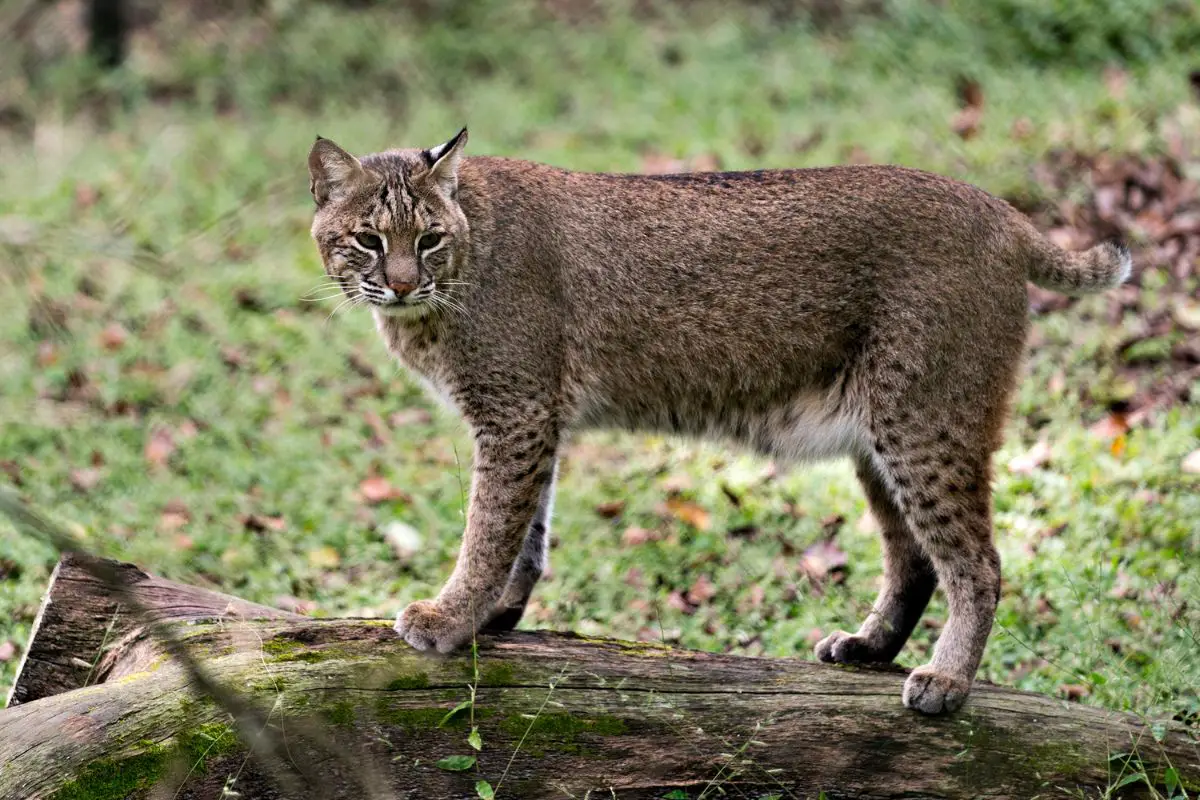
Offensive Capabilities
Both the bobcat and cougar rely on their speed, senses, sharp teeth, and claws to fight and hunt. Due to its power and size, the cougar has more chances of quickly killing its prey with a fatal bite on its neck.
The bobcat will also use its sharp teeth to latch on to the neck of its prey, but it will usually take several bites to completely kill its prey.
Skilled hunters, both cats will use their hearing and vision to search for prey, before using their impressive moveability to slowly stalk their prey before making a move.
When ready, they will pounce on their prey from behind, latching onto their necks with their claws and teeth.
Despite primarily hunting from the ground, some bobcats have even been known to use their excellent jumping ability to launch at prey from the trees.
Predatory Behavior
Like most species of cat, bobcats and cougars are ambush predators that prefer to sneak up and stalk their prey.
Both cats will happily stalk their prey for miles in order to make a clean kill. In fact, both cats are virtually the same in the way in which they go about their kills.
They both use their soft feet to creep up on prey. After examining potential targets, they stalk the prey until the time is right. At the opportune moment, the bobcat and cougar will leap at their prey, aiming for their neck.
A fatal bite will normally kill the prey. Thanks to its size, the cougar may even wrap its legs around the prey, dragging it to the ground.
Tracks
Distinguishing between cougar and bobcat tracks is pretty easy. This is because the cougar’s tracks are much bigger than the bobcat’s tracks. Cougar footprints are, on average, 4 inches wide and 3 ⅓ inches long.
A bobcat’s tracks are approximately twice the size of a domestic cat’s paw prints. Bobcat tracks are usually roughly 2 inches wide and just over 2 inches long.
Where the tracks are similar is in the way both cats have bigger front feet than back.
Length
Without their tails, bobcats only grow to reach between 26 and 41 inches long. Even with their tails, bobcats only ever tend to reach lengths of 49 inches if they reach maximum size.
This is a lot smaller than the cougar. Cougars grow up to lengths of 53 inches without their tail. This is still longer than the biggest bobcats with their tails. With their tail, cougars can reach lengths of 84 inches long.
Even the smallest cougars are bigger than most bobcats.
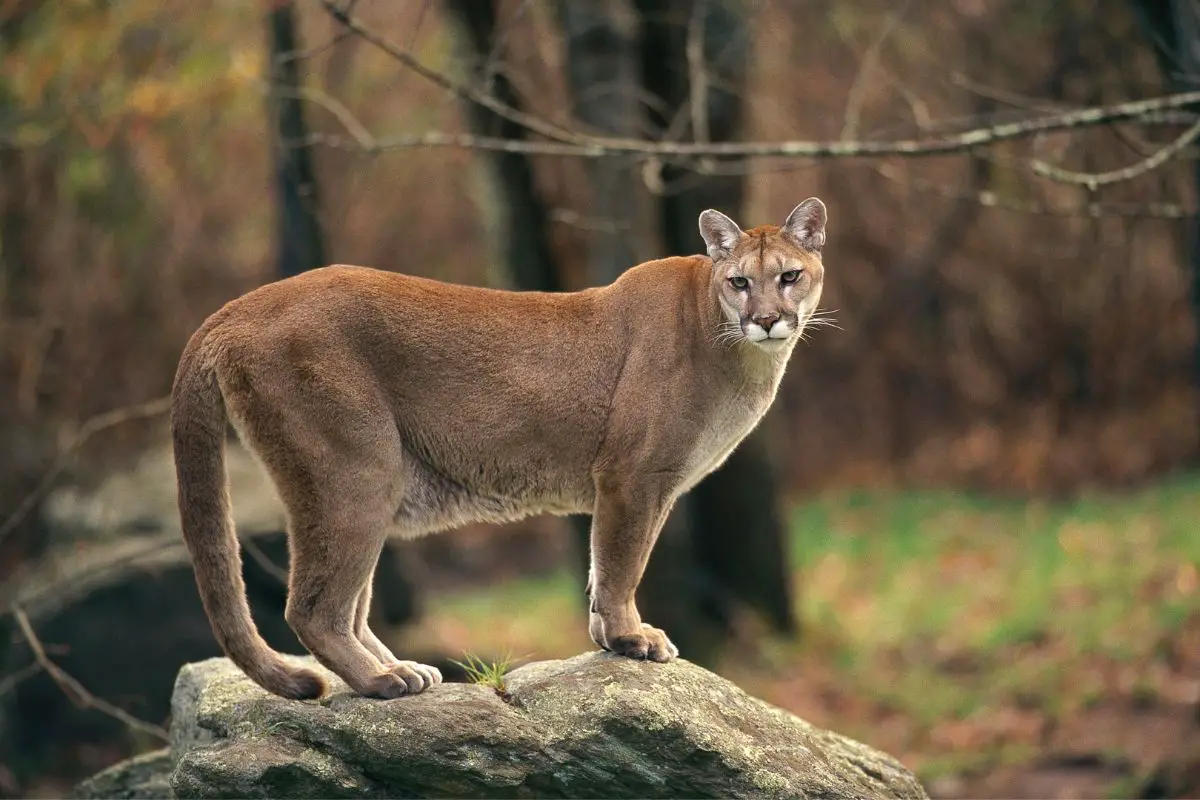
Weight
Another huge difference between the cougar and bobcat can be seen when looking at the weight of both species of cat.
Bobcats typically weigh between 11 and 30 lbs. Of course, there have been some exceptions to this with larger, fat old cats.
Compared to the cougar, this is nothing. Most cougars will weigh anywhere between 120 and 220 lbs. That’s a whopping 100 lbs more than some bobcats. Even the biggest bobcats usually weigh 80 or 90 lbs less than the lightest cougars.
Habitat
As a result of the habitats cougars and bobcats live in, there’s a very good chance they’ll pass through each other’s territory at some point during their lives. This is because they both live in similar environments and climates.
Bobcats inhabit a wide range of habitats, but the most common are forests, coastal swamps, scrubland, and desert edges. Cougars also live in a wide range of habitats but prefer to live in forests, lowlands, and mountainous deserts.
Geographical Range
Bobcats and cougars both have an extremely large geographical range. However, the cougars are bigger. In fact, the cougar has the largest geographical range of any large wild terrestrial animal in the Western Hemisphere.
The cougar ranges from the Canadian Yukon all the way to the southern Andes in South America. The bobcat can be found all over the United States, southern Canada, and northern Mexico.
Body
Despite being different in size and weight, the bobcat and cougar are quite similar in regard to their bodies. For their sizes, both have quite long legs, a small head, and large relatively big paws.
Interestingly, the bobcat and cougar also have longer hind legs than front legs. This is important as it helps them leap further and with more power.
As we mentioned earlier, both cats also have retractable claws that can be used to fight, attack, and climb.
As far as fur is concerned, the bobcat has thicker, more fluffy fur than the cougar.
Range
The bobcat might be quite widespread in terms of geographical range, but when it comes to each individual cat, they have a surprisingly small range.
A female bobcat might only have a range of 6 sq miles, while a male bobcat might only have a range of 25 sq miles. The cougar’s range varies from 50 to 100 sq miles. Like the bobcat, females tend to have a smaller range than males.
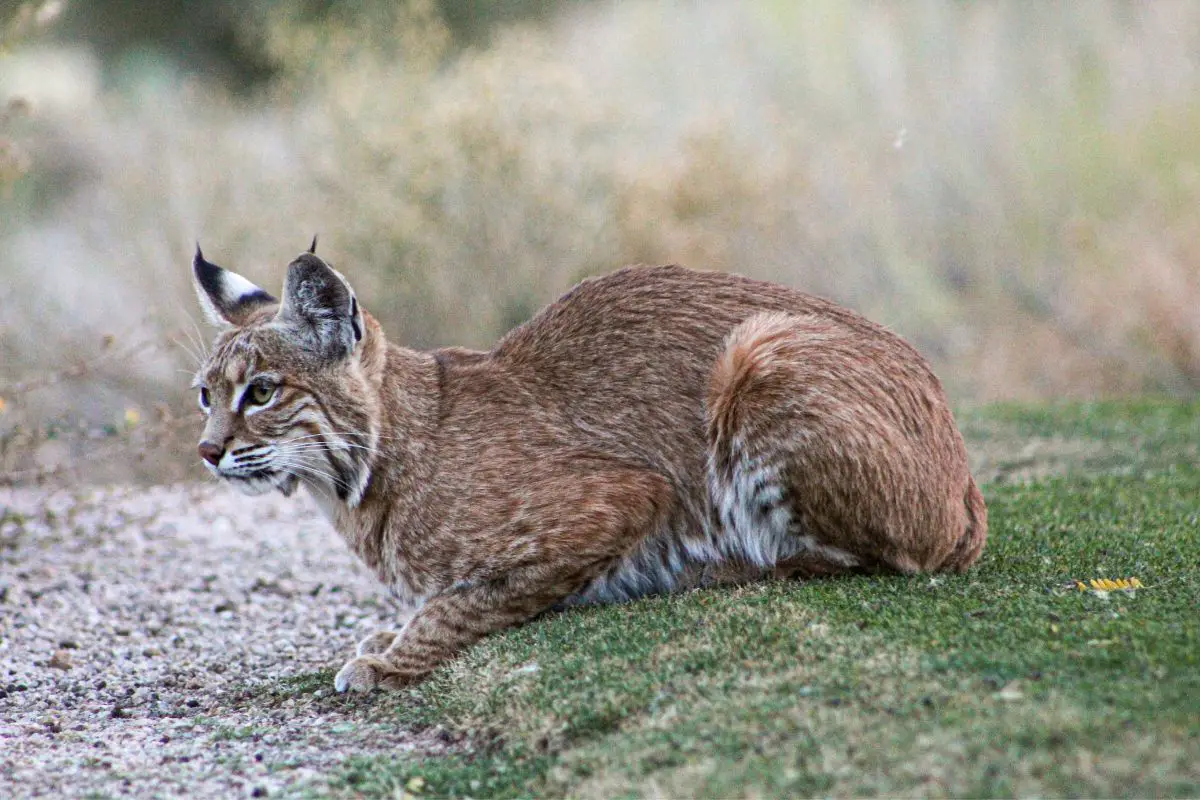
Legs And Feet
From the base of their feet to their shoulder, the cougar’s legs can grow to be 24 to 35 inches long. Compared to a bobcat, this isn’t that much bigger. The bobcat’s legs usually grow to be 24 inches long.
Both cats have longer hind legs than front legs.
Both cats also have five pads on their feet and retractable claws.
Fur Color And Patterns
When we look at the bobcat and cougars fur color and patterns, we can start to see why people would get confused between the two.
Bobcats and cougars have light brown, yellowish fur that can sometimes look more gray depending on the climate.
They also both have a white underbelly. Some bobcats and cougars are even slightly reddish-brown in color.
However, there are differences. For example, the fur on the bobcat, particularly around its ears, is much fluffier and tuft than that of a cougar. Cougars have a shorter, more sleek coat.
In terms of patterns, the bobcat is spotted with dark brownish-gray markings.
A cougar’s coat can be free from any markings or spotted with dark brown marks.
Tails
The cougar’s tail is much longer than the bobcat’s. Reaching lengths of 42 inches long, some cougars have a tail that’s longer than the whole body of the bobcat.
On the other hand, bobcats only have tails that grow between 2 and 7 inches long.
Who Will Win In A Fight Between Bobcat And Cougar?
While the bobcat would put up a good fight, if the bobcat and cougar were to fight, the sheer size and power of the cougar would be enough to overpower the smaller species of cat.
In fact, there’s a very good chance that the bobcat would try its best to flee the scene as opposed to fighting the cougar.
In all fairness, the bobcat could do some damage, but one bite from the cougar could fatally injure the bobcat.
In Conclusion
So, what have we learned from this article?
Both the bobcat and cougar are fierce predators that have a large geographical range. Skilled hunters that prefer to ambush their prey, the main differences between the two are size and power.
Despite being fast and powerful for their size, the much bigger cougar has a lot more strength and power than the bobcat.
It’s fair to say that if the two were to ever fight, the cougar would win pretty easily.
- Sink Your Teeth Into This: Analyzing the Powerful Lion Bite Force - September 8, 2023
- Siberian Tigers: Everything You Need To Know - September 4, 2023
- Do Lions Eat Humans? Understanding Lion Aggression and Risks - September 4, 2023


